Abstract
Pigeons obtained food by making four responses on three keys in a specified sequence, e.g., left, right, center, right. Under the "tandem-learning" condition, all three keys were the same color throughout the response sequence, and the sequence was changed from session to session. After total errors per session (overall accuracy) and within-session error reduction (learning) had stabilized, the effects of varying doses phenobarbital and chlordiazepoxide were assessed. For comparison, the drug tests were also conducted under a "tandem-performance" condition, in which the response sequence was the same from session to session, and under corresponding "chain-learning" and "chain-performance" conditions, where different colored keylights were associated with the response sequence. Under all four baseline conditions, the largest dose of each drug impaired overall accuracy. Under the two learning conditions, the error rate decreased across trials within each session, but the degree of negative acceleration was less in the drug sessions than in the control sessions. In contrast, under the two performance conditions, the error rate was relatively constant across trials, but was higher in the drug sessions than in the control sessions. Of the four baselines, the chain-learning condition was the most sensitive to the drug effects.
Full text
PDF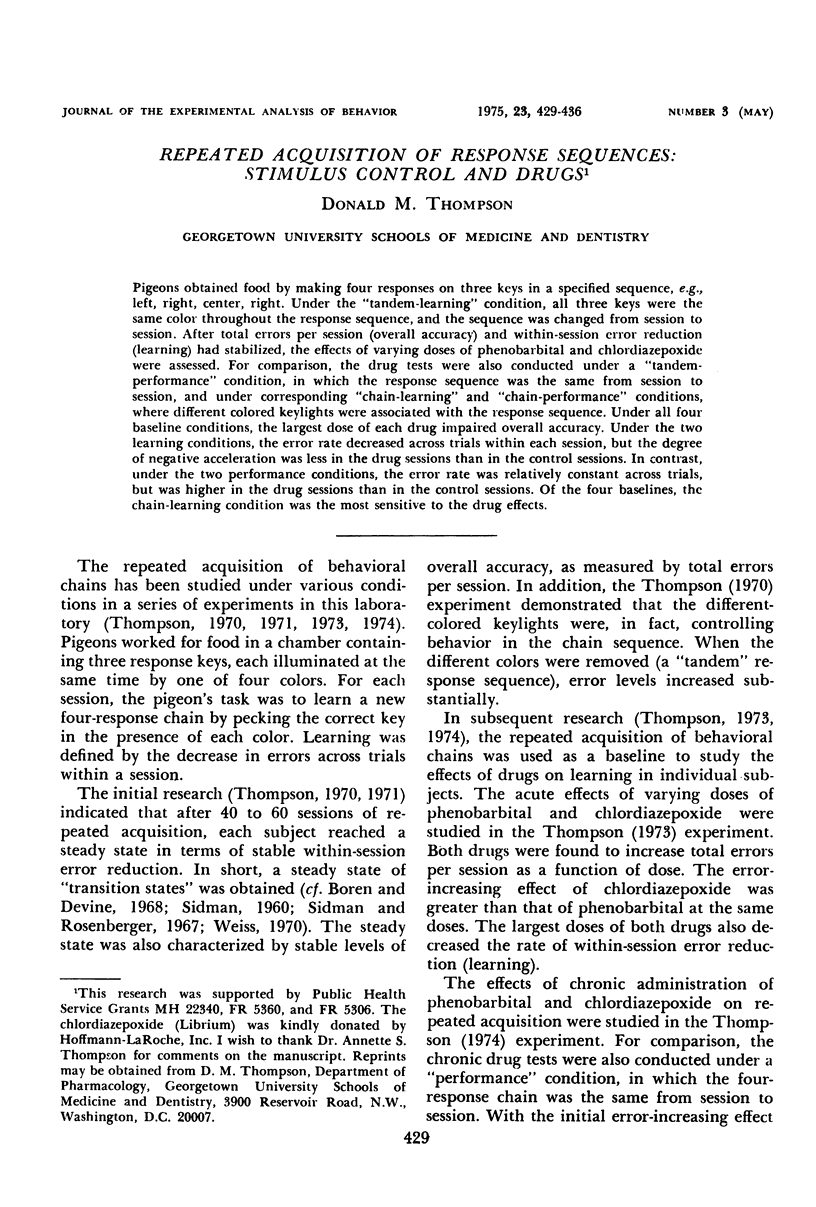
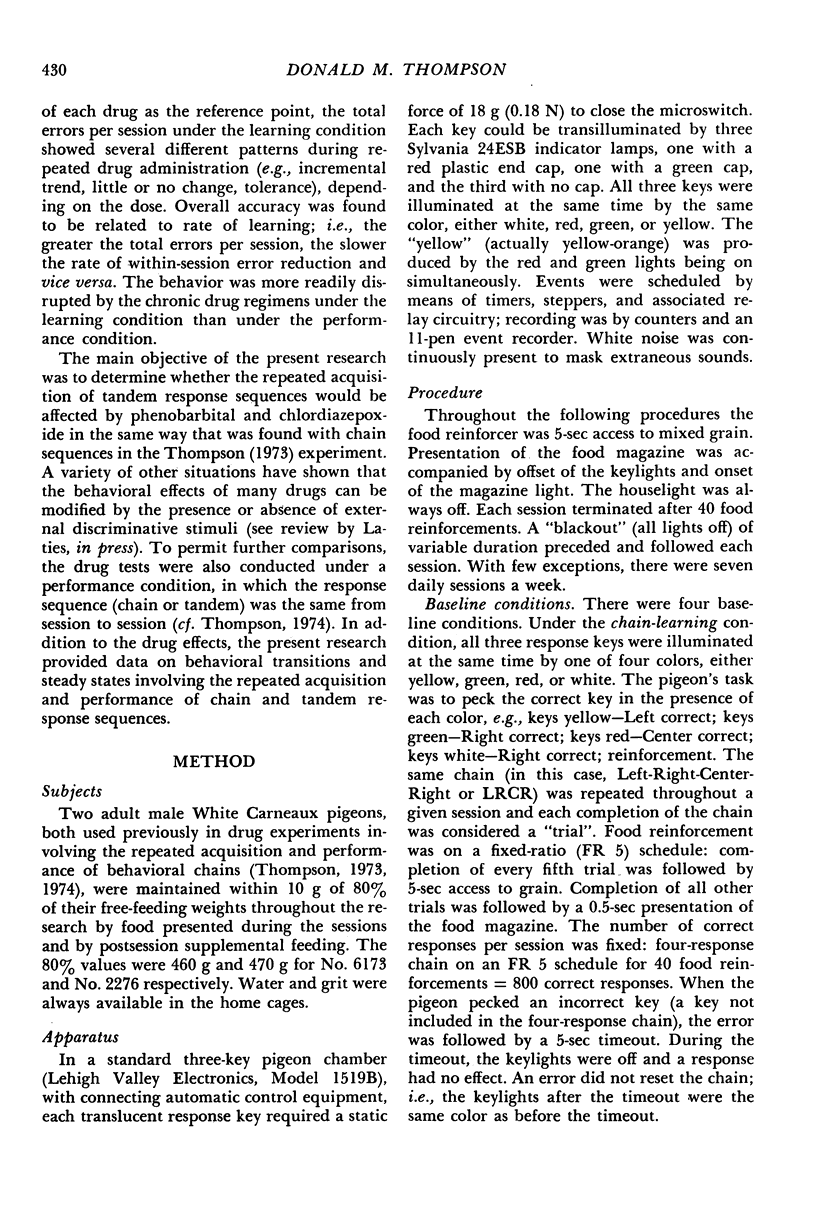
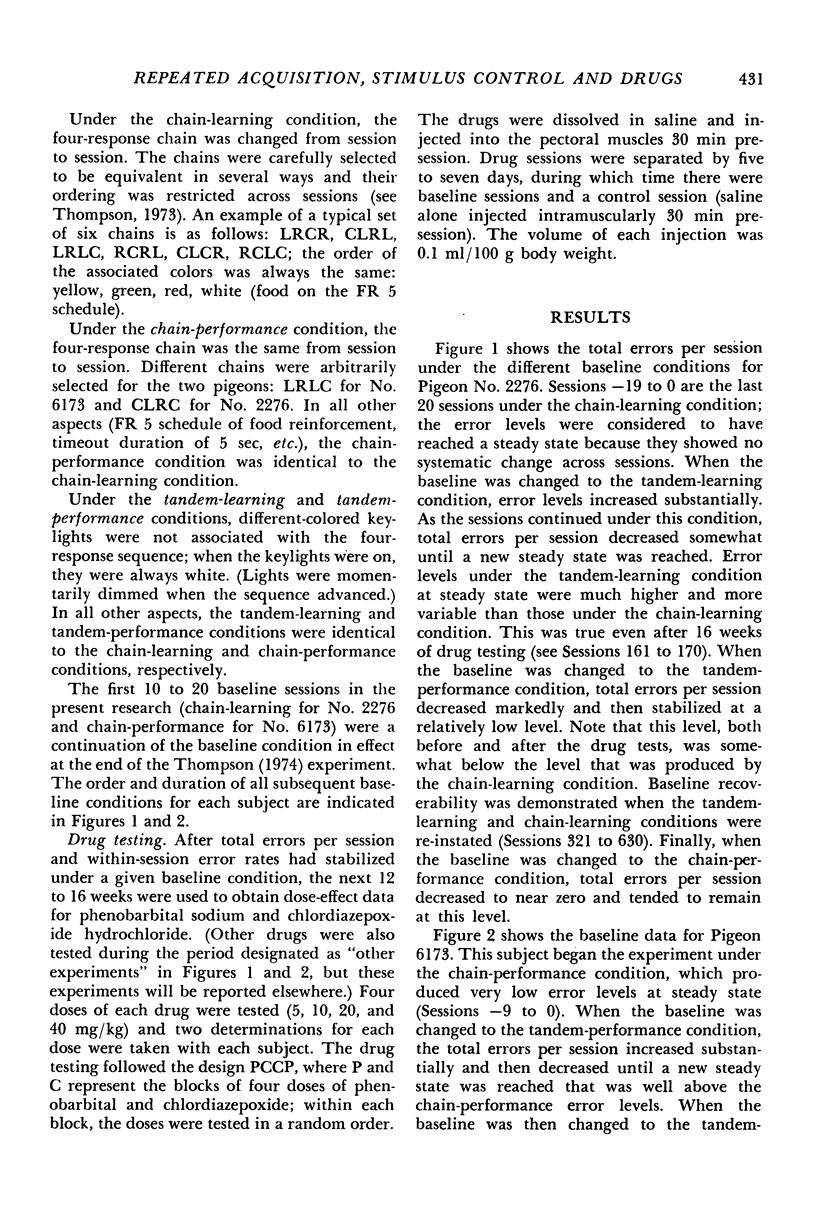
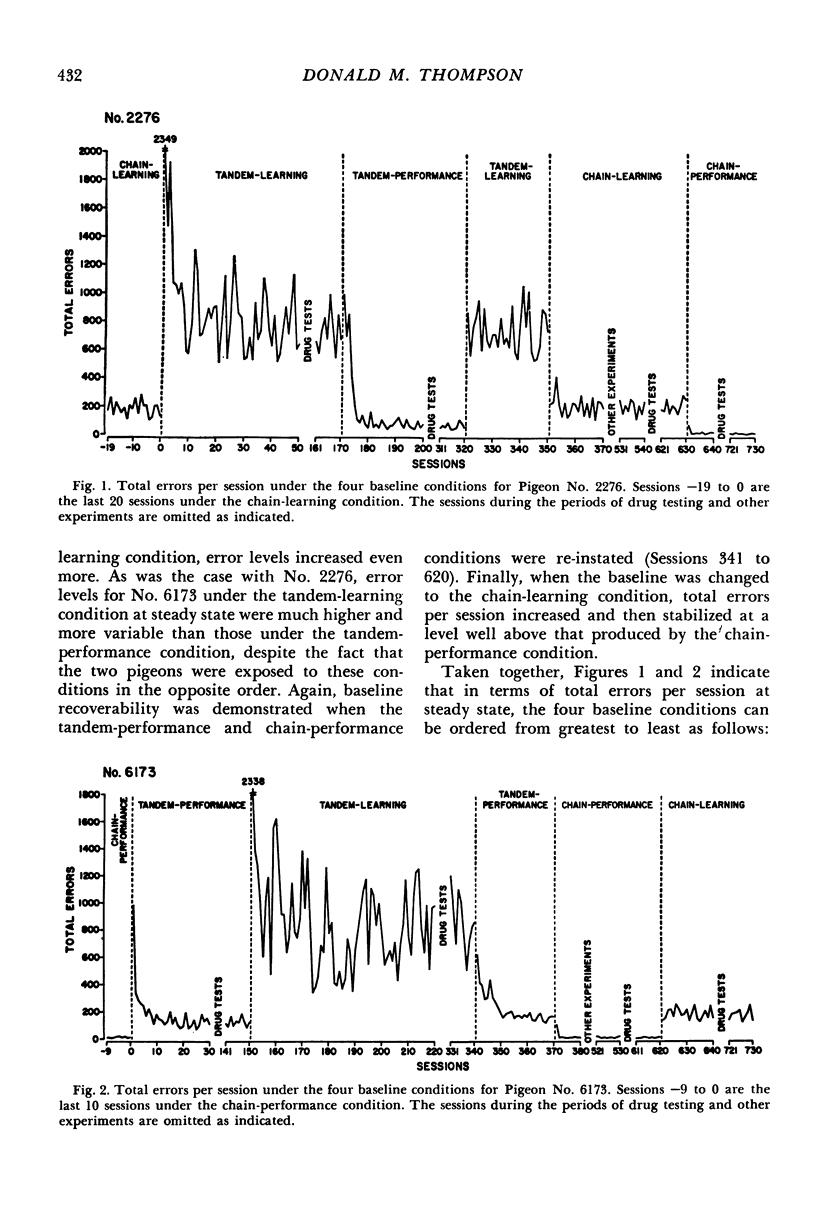
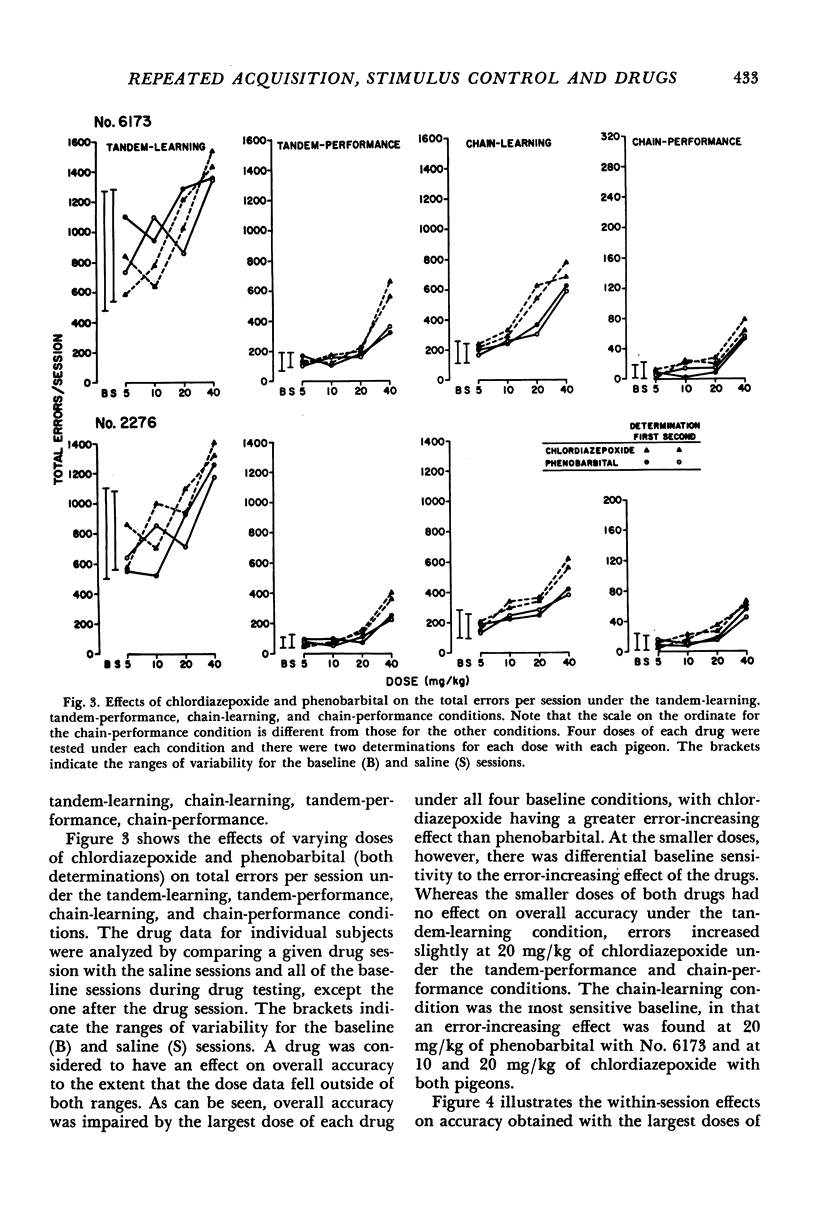
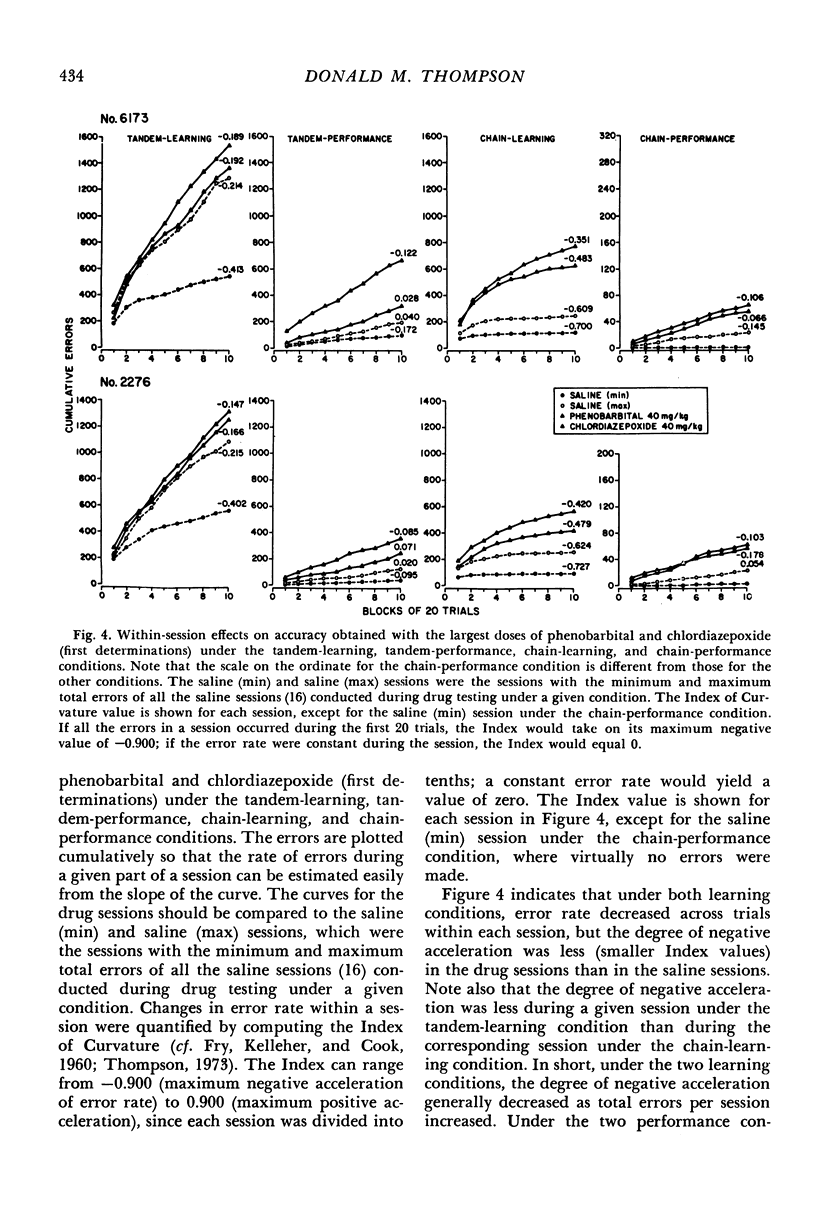
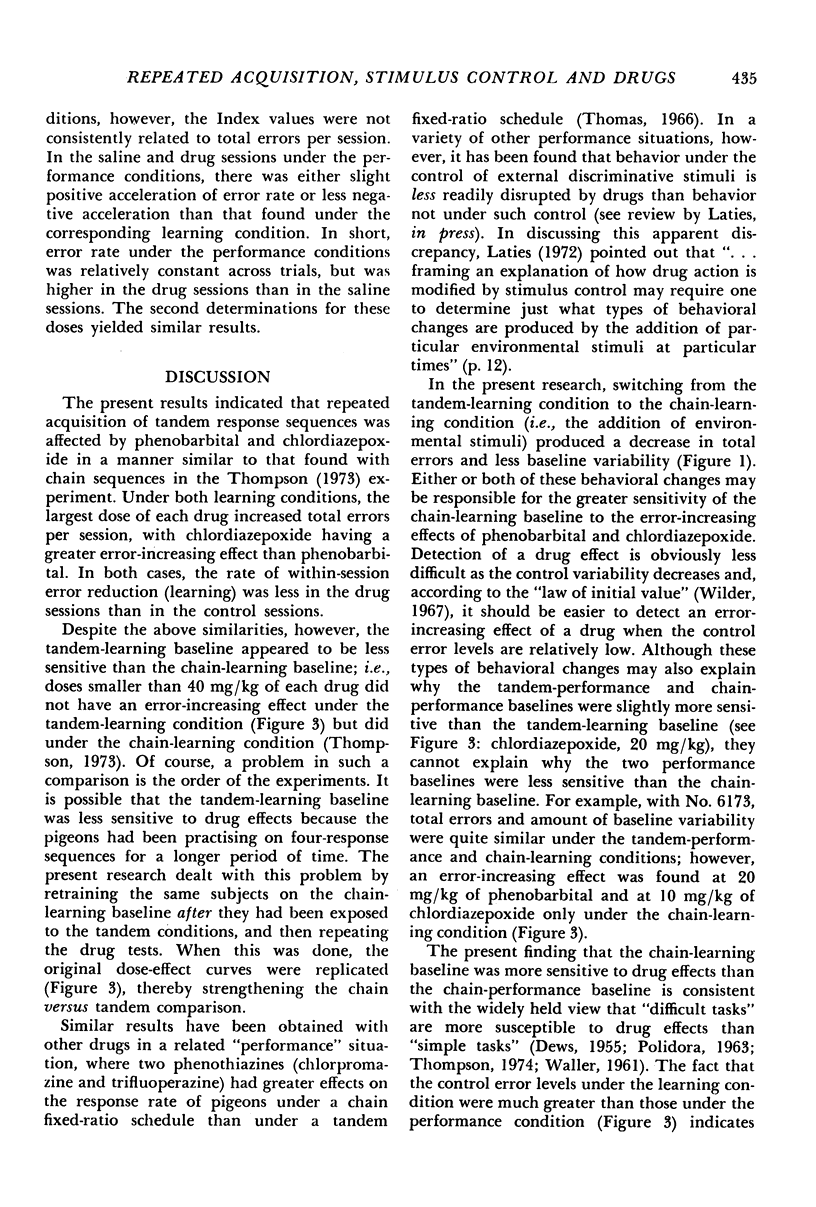

Selected References
These references are in PubMed. This may not be the complete list of references from this article.
- Boren J. J., Devine D. D. The repeated acquisition of behavioral chains. J Exp Anal Behav. 1968 Nov;11(6):651–660. doi: 10.1901/jeab.1968.11-651. [DOI] [PMC free article] [PubMed] [Google Scholar]
- DEWS P. B. Studies on behavior. II. The effects of pentobarbital, methamphetamine and scopolamine on performances in pigeons involving discriminations. J Pharmacol Exp Ther. 1955 Dec;115(4):380–389. [PubMed] [Google Scholar]
- FRY W., KELLEHER R. T., COOK L. A mathematical index of performance on fixed-interval schedules of reinforcement. J Exp Anal Behav. 1960 Jul;3:193–199. doi: 10.1901/jeab.1960.3-193. [DOI] [PMC free article] [PubMed] [Google Scholar]
- Laties V. G. The modification of drug effects on behavior by external discriminative stimuli. J Pharmacol Exp Ther. 1972 Oct;183(1):1–13. [PubMed] [Google Scholar]
- Sidman M., Rosenberger P. B. Several methods for teaching serial position sequences to monkeys. J Exp Anal Behav. 1967 Sep;10(5):467–478. doi: 10.1901/jeab.1967.10-467. [DOI] [PMC free article] [PubMed] [Google Scholar]
- Thomas J. R. Differential effects of two phenothiazines on chain and tandem schedule performance. J Pharmacol Exp Ther. 1966 May;152(2):354–361. [PubMed] [Google Scholar]
- Thompson D. M. Repeated acquisition as a behavioral base line for studying drug effects. J Pharmacol Exp Ther. 1973 Feb;184(2):506–514. [PubMed] [Google Scholar]
- Thompson D. M. Repeated acquisition of behavioral chains under chronic drug conditions. J Pharmacol Exp Ther. 1974 Mar;188(3):700–713. [PubMed] [Google Scholar]
- WALLER M. B. Effects of chronically administered chlorpromazine on multiple-schedule performance. J Exp Anal Behav. 1961 Oct;4:351–359. doi: 10.1901/jeab.1961.4-351. [DOI] [PMC free article] [PubMed] [Google Scholar]


